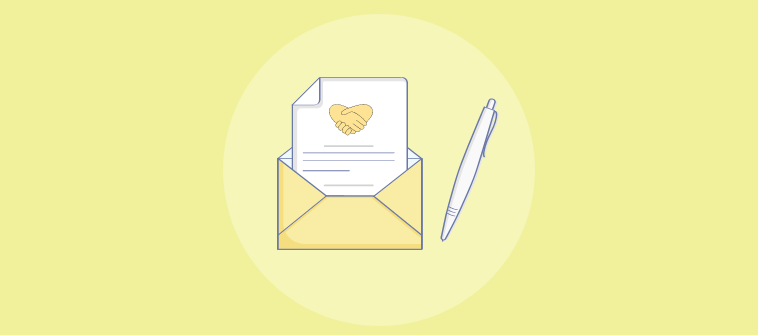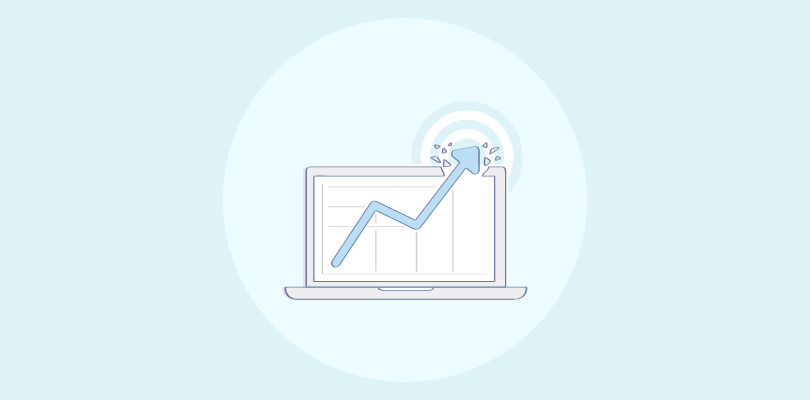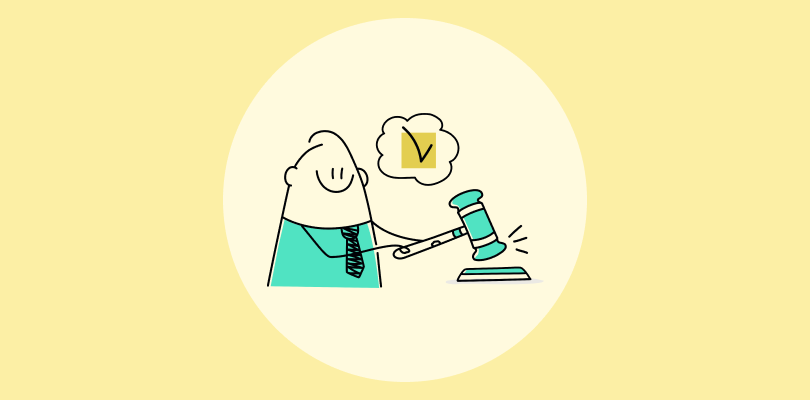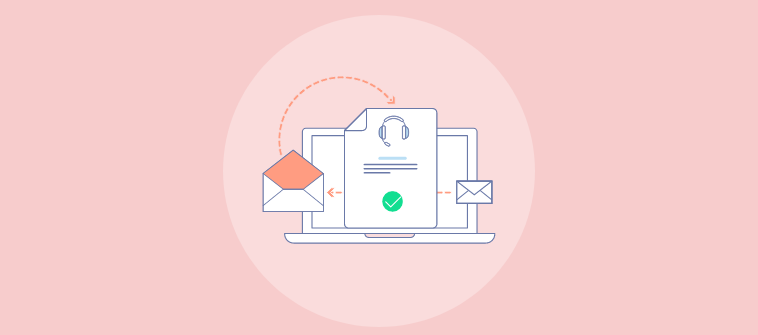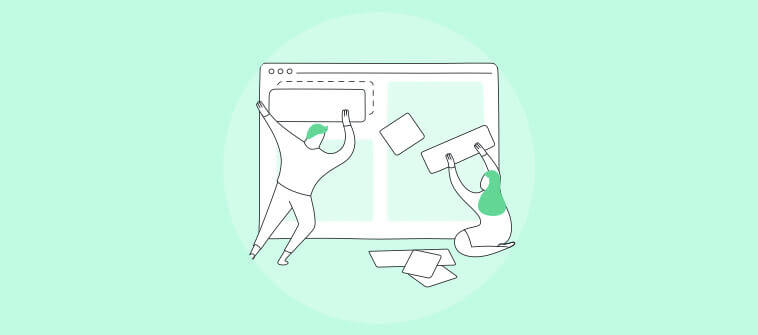Whether you wish to build the next tallest skyscraper or make the most of your customer success efforts – all great things start with a great plan!
For customer success professionals, the right customer success plan outlines how your team plans to deliver value, satisfaction, and loyalty to your audience. It also helps you align your products and services with customer needs.
But how do you create an actionable plan?
Don’t worry! We have done the heavy lifting, so you don’t have to start on a blank canvas. Read this blog to explore 8 customer success plan templates that cover multiple situations.
What Is a Customer Success Plan?
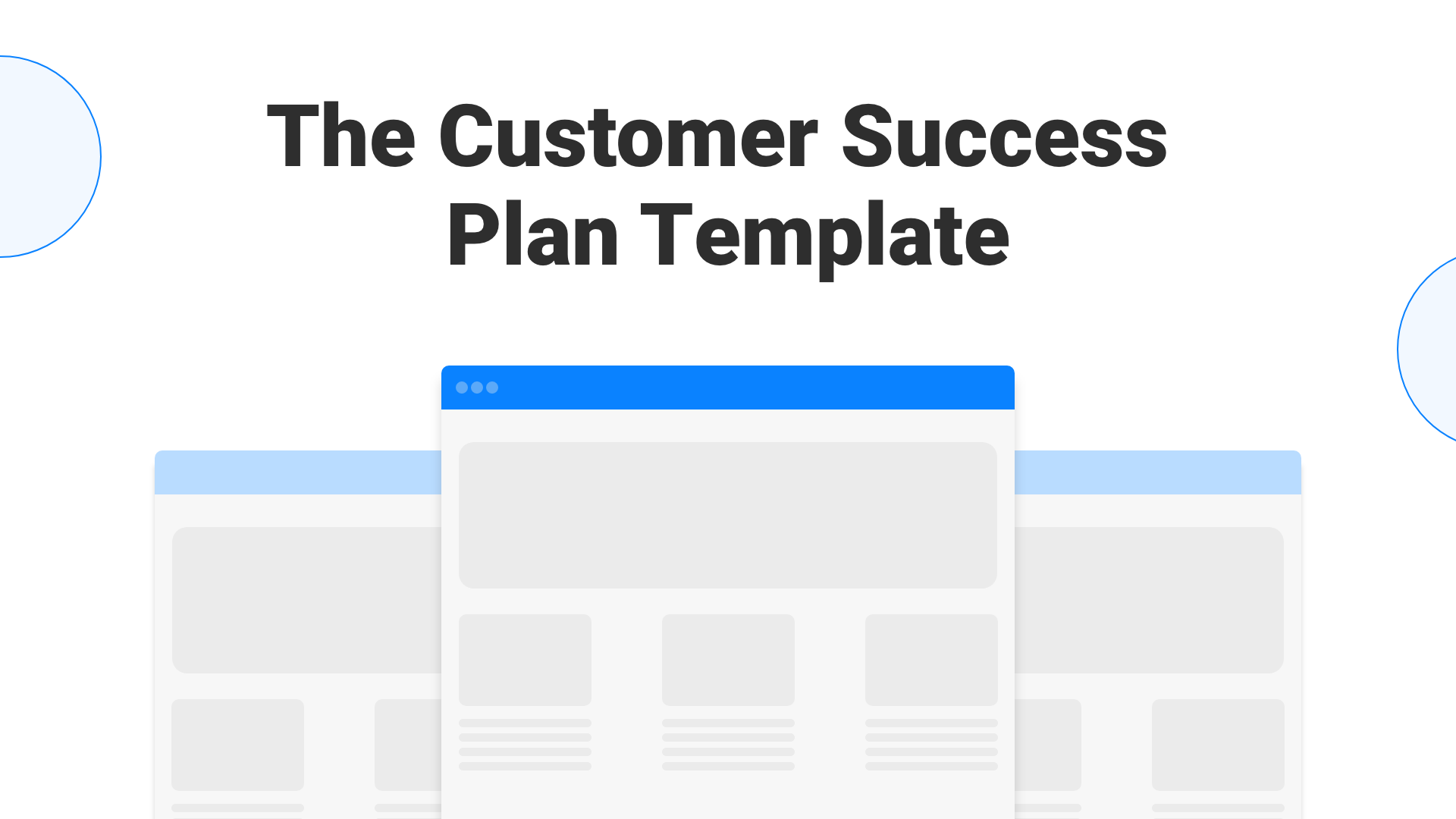
A customer success plan is a strategic document outlining the steps and actions a business should take to ensure its customers achieve their desired outcomes and derive value from the products or services purchased.
It typically includes an analysis of customer goals, key success metrics, a roadmap for onboarding and engagement, communication strategies, and measures to address challenges or obstacles.
Customer success plans are instrumental in fostering long-term customer satisfaction, loyalty, and retention. They serve as a proactive approach to understanding and meeting customer needs throughout the entire customer lifecycle.
Why Should You Create a Customer Success Plan?
Creating a customer success plan is crucial because it ensures that your customers achieve their desired outcomes while using your product or service. By outlining clear goals, milestones, and strategies tailored to each customer, you can proactively guide them through their journey, addressing potential challenges before they arise.
Moreover, a well-structured customer success plan can significantly reduce churn rates by aligning your team’s efforts with the customers’ goals. It enables your organization to monitor progress, measure success, and make necessary adjustments, ensuring that customers derive maximum value from your offerings. This focus on customer success drives retention and encourages upsells, referrals, and overall business growth.
8 Best Customer Success Plan Templates
It’s time to explore some ready-to-use customer success program templates. Feel free to customize these templates based on your specific needs.
1. Customer Success Plan Template for Smooth Onboarding
Did you know that 55% of customers say they’ve returned a product because they didn’t understand how to use it?
A smooth onboarding process can be the difference between customers staying with your brand and switching to competitors. It sets the foundation for a positive customer experience, reducing friction and ensuring users quickly understand the value of your product or service.
Use this template to deliver a smooth onboarding experience.
1. Customer Overview
Customer Name: [Customer Name]
Key Contacts: [Primary Contact, Secondary Contact]
Onboarding Start Date: [Date of Onboarding]
2. Onboarding Goals and Objectives
Customer’s Expectations: [Specify Customer’s Primary Onboarding Goals and Expectations]
Onboarding Success Metrics: [Define Key Performance Indicators (KPIs) for Successful Onboarding]
3. Initial Assessment
Current Knowledge and Experience: [Evaluate Customer’s Current Understanding of the Product/Service]
Identify Gaps: [Determine Areas Where Additional Training or Guidance May Be Needed]
4. Onboarding Roadmap
Week-by-Week Plan: [Outline a Detailed Onboarding Schedule]
Key Milestones: [Identify Significant Achievements and Milestones]
5. Training and Resources
Training Sessions: [Specify Dates and Topics for Training Sessions]
Knowledge Base Access: [Provide Information on Accessing Support Articles and Resources]
6. Customization and Integration
Personalization Options: [Detail Available Customization Features]
Integration Steps: [Provide Guidance on Integrating the Product/Service with Other Tools]
7. Regular Check-ins
Frequency of Check-ins: [Determine How Often Check-ins Will Occur]
Agenda: [Outline Topics to Cover in Each Check-in]
8. Q&A Sessions
Scheduled Q&A Sessions: [Specify Times for Dedicated Q&A Sessions]
Open Communication Channels: [Encourage Customers to Ask Questions Anytime]
9. Feedback Collection
Feedback Mechanism: [Specify How Customer Feedback Will Be Gathered]
Feedback Analysis: [Outline How Feedback Will Be Analyzed and Incorporated]
10. Escalation Plan
Identify Challenges: [Anticipate Potential Onboarding Challenges]
Resolution Steps: [Provide Steps for Addressing and Resolving Challenges]
11. Renewal and Upsell Opportunities
Introduction to Future Features: [Highlight Upcoming Product Features or Enhancements]
Upsell Potential: [Identify Opportunities for Upselling Based on Customer Needs]
12. Customer Support and Resources
24/7 Customer Support Availability: [Communicate Access to Around-the-Clock Support]
Knowledge Base and Resources: [Ensure Customer Awareness of Available Online Support Materials]
2. Customer Success Plan Template for Continous Education & Enablement
“Make sure your customers know what they are getting. Educate them to understand why they should be doing business with you.” — Shep Hyken, CX expert & keynote speaker
Customer education and enablement are critical components of a successful customer journey. By providing customers with the right tools, resources, and help center, you empower them to maximize the value of your product or service.
Use this template to help your customers achieve their desired outcomes with confidence.
1. Customer Overview
Customer Name: [Customer Name]
Key Contacts: [Primary Contact, Secondary Contact]
Current Product Usage: [Brief Overview of Current Product Usage and Adoption]
2. Education & Enablement Goals
Objective: [Specify the Desired Outcome for Customer Education & Enablement]
Success Metrics: [Define Key Performance Indicators (KPIs) for Effective Education & Enablement]
3. Knowledge Assessment
Initial Knowledge Check: [Evaluate Customer’s Existing Knowledge of the Product]
Knowledge Gaps: [Identify Areas Where Additional Education is Needed]
4. Onboarding & Training
Onboarding Program: [Outline the Onboarding Process with Step-by-Step Guides]
Training Schedule: [Detail the Schedule for Training Sessions and Webinars]
Personalized Training: [Provide Customized Training for Specific Customer Needs]
5. Educational Resources
Knowledge Base Access: [Promote Access to the Knowledge Base with Articles, FAQs, and Tutorials]
Additional Resources: [List Other Resources Like Video Tutorials, Webinars, etc.]
Self-Service Tools: [Highlight Self-Service Tools Available to the Customer]
6. Engagement & Follow-up
Scheduled Check-ins: [Determine Frequency of Follow-up Sessions to Ensure Continued Learning]
Ongoing Support: [Outline the Availability of Support for Answering Questions and Addressing Concerns]
7. Feedback Loop
Feedback Collection: [Set Up Mechanisms for Collecting Feedback on Educational Content]
Continuous Improvement: [Outline Steps for Analyzing Feedback and Updating Educational Resources]
8. CSM Involvement
Regular Check-ins with CSM: [Establish Regular Meetings with the Assigned Customer Success Manager]
Proactive Recommendations: [Provide Actionable Advice Based on Customer’s Progress and Feedback]
9. Success Review
Review of Education Goals: [Assess Whether Education & Enablement Goals Have Been Met]
Next Steps: [Specify the Next Steps for Ongoing Customer Success]
3. Customer Success Plan Template for Complaint Management
Effective customer complaint management is crucial for maintaining strong customer relationships and fostering loyalty. By addressing complaints promptly and efficiently, customer success teams can turn negative experiences into opportunities for improvement and customer satisfaction.
This customer success plan example explores the importance of root cause analysis and the use of a help desk ticketing system for improved complaint tracking and support automation. You can watch this short video to learn more about help desk software benefits:
Here is a template to ensure every complaint is handled with care.
1. Customer Overview
Customer Name: [Customer Name]
Key Contacts: [Primary Contact, Secondary Contact]
Complaint History: [Brief Overview of Past Complaints and Resolutions]
2. Complaint Resolution Goals
Objective: [Specify the Desired Outcome for Complaint Management]
Resolution Metrics: [Define Key Performance Indicators (KPIs) for Successful Complaint Resolution]
3. Complaint Analysis
Identify Common Complaints: [Analyze Past Complaints and Identify Recurring Issues]
Root Cause Analysis: [Determine the Root Causes of Frequent Complaints]
4. Proactive Outreach
Scheduled Check-ins: [Determine Frequency of Proactive Check-ins with Customers Post-Complaint]
Engagement Initiatives: [Outline Strategies for Regular Engagement to Prevent Future Complaints]
5. Help Desk Software Utilization
Complaint Tracking: [Use Help Desk Software to Log, Track, and Analyze Complaints Efficiently]
Automation of Responses: [Leverage Help Desk Tools to Automate Responses and Ensure Timely Resolution]
Analytics & Reporting: [Generate Help Desk Reports on Complaint Trends and Resolution Times]
6. Value Reinforcement
Highlight Key Features: [Reiterate Core Features and Value Proposition to Address Complaints]
New Features Communication: [Communicate Any Updates or Enhancements That Resolve Common Complaints]
7. Special Offers or Incentives
Exclusive Discounts: [Introduce Special Offers to Encourage Retention After a Complaint]
Incentives for Staying: [Provide Incentives to Customers Who Have Recently Filed Complaints]
8. Customer Support Enhancements
Faster Response Times: [Implement Strategies to Improve Support Response Times for Complaints]
Dedicated Support Contact: [Assign Dedicated Support Contacts for Priority Complaint Management]
9. Feedback Loop Implementation
Continuous Feedback Collection: [Set Up Mechanisms for Collecting Feedback on Complaint Resolution]
Analysis and Response: [Outline Steps for Analyzing Feedback and Implementing Improvements]
10. Escalation Plan
Identify Warning Signs: [Define Indicators Signifying Potential Escalation of Complaints]
Preventive Measures: [Specify Steps to Address Issues Before They Escalate]
11. Continuous Monitoring
Engagement Tracking: [Implement Systems to Monitor Customer Engagement Post-Complaint]
Complaint Trend Analysis: [Utilize Tools to Track and Analyze Complaint Trends Over Time]
4. Customer Success Plan Template for Re-Engagement
Acquiring new customers is around 5 to 7 times more expensive than retaining existing customers.
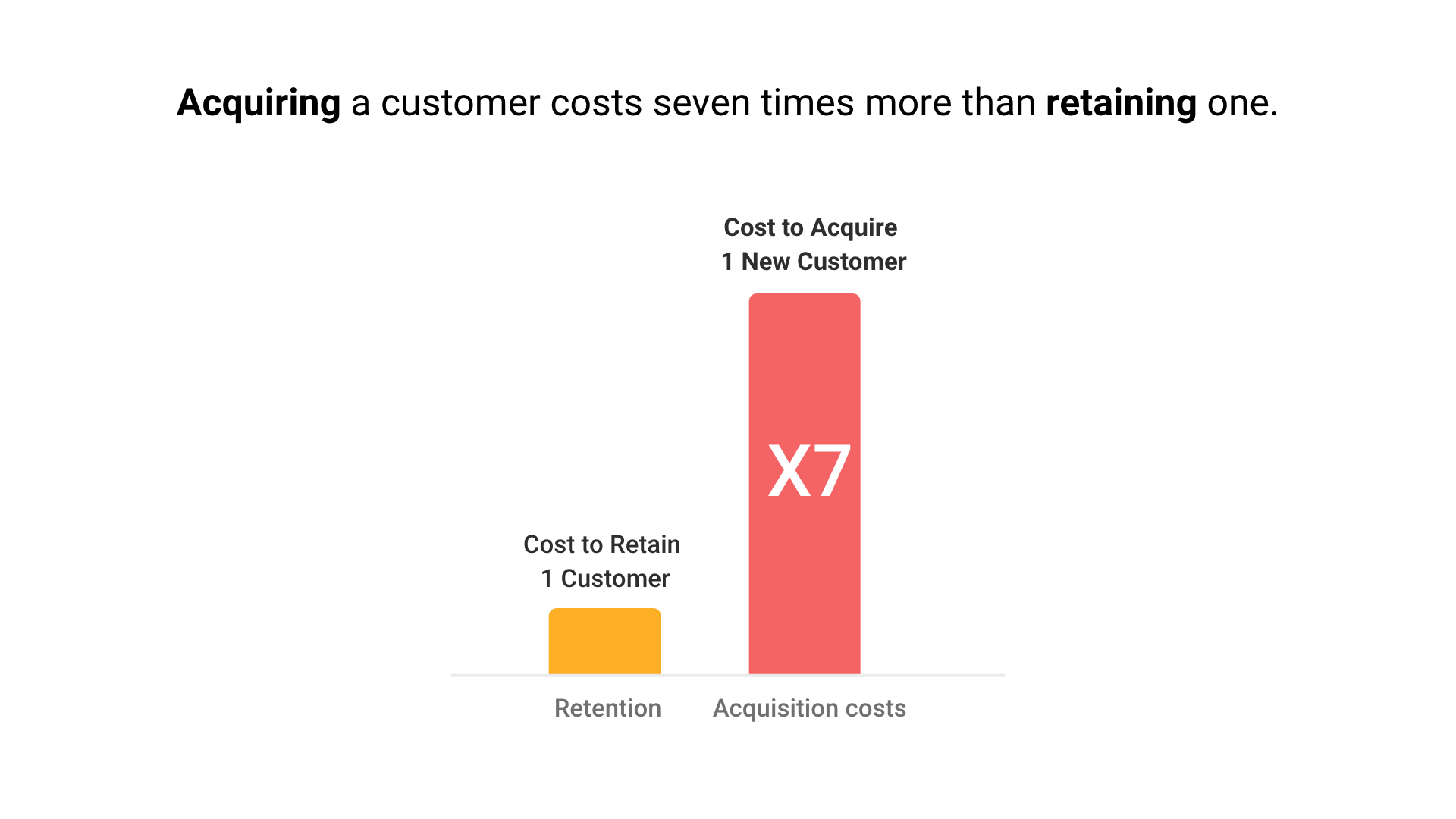
No wonder smart entrepreneurs emphasize re-engagement, knowing that inactive customers make a big pool of untapped revenue.
Customer re-engagement is vital for those seeking to reconnect with inactive or disengaged customers. It not only revitalizes relationships but also presents an opportunity to showcase product updates, address concerns, and offer incentives.
Use this template to reconnect with inactive customers.
1. Customer Overview
Customer Name: [Customer Name]
Key Contacts: [Primary Contact, Secondary Contact]
Last Engagement Date: [Date of Last Interaction]
2. Current Status Analysis
Reasons for Silence: [Identify Potential Reasons for Customer Disengagement]
Feedback from Previous Interactions: [Review Previous Communications and Feedback]
3. Goals for Re-Engagement
Objective: [Specify the Desired Outcome of the Re-Engagement]
Customer Success Metrics: [Define Key Performance Indicators (KPIs) for Successful Re-Engagement]
4. Communication Strategy
Preferred Communication Channels: [Determine How the Customer Prefers to be Contacted]
Message Tone: [Adopt an Appropriate and Empathetic Tone in Communications]
5. Outreach Plan
Initial Outreach: [Craft a Personalized Message to Restart the Conversation]
Follow-up Sequence: [Specify a Sequence/Frequency of Follow-up Communications]
6. Value Proposition Reinforcement
Highlight Value: [Reiterate the Value Proposition of Your Product/Service]
New Features or Improvements: [Communicate Any New Features or Enhancements]
7. Special Offer or Incentive
Exclusive Offer: [Introduce a Limited-Time Offer or Exclusive Benefit]
Incentives for Returning: [Provide Special Discounts or Promotions]
8. Request for Feedback
Feedback Collection Method: [Specify How Feedback Will Be Gathered]
Areas for Improvement: [Seek Feedback on Areas Where Improvement is Needed]
9. Personalized Customer Success Manager (CSM) Assistance
Dedicated CSM Contact: [Assign a Dedicated CSM for Personalized Assistance]
Support and Guidance: [Offer Support and Guidance Tailored to Customer Needs]
10. Check-in Meetings
Frequency of Check-ins: [Determine How Often Check-in Meetings Will Occur]
Agenda: [Outline Topics to Cover in Each Check-in]
11. Renewal Incentives
Renewal Offers: [Introduce Special Renewal Offers or Incentives]
Upsell Opportunities: [Identify Upsell Opportunities Based on Customer Needs]
12. Continuous Monitoring
Engagement Tracking: [Implement Systems to Monitor Customer Engagement]
Feedback Loops: [Establish Mechanisms for Continuous Feedback]
13. Next Steps
Action Items: [Specify Immediate Actions Following the Re-Engagement Plan]
5. Customer Success Plan Template for Reducing Churn
Customer churn, or in other words – the loss of customers, can significantly impact a business’s bottom line. It not only results in immediate revenue loss but also diminishes long-term profitability.
By reducing customer churn, your business can preserve revenue streams, enhance customer lifetime value, and bolster overall profitability.
Use this template to reduce churn and drive profitability.
1. Customer Overview
Customer Name: [Customer Name]
Key Contacts: [Primary Contact, Secondary Contact]
Churn History: [Brief Overview of Churn History]
2. Churn Reduction Goals
Objective: [Specify the Desired Outcome for Churn Reduction]
Churn Reduction Metrics: [Define Key Performance Indicators (KPIs) for Successful Churn Reduction]
3. Churn Analysis
Identify Reasons for Churn: [Analyze Past Churn Cases and Identify Common Reasons]
Customer Feedback: [Collect Feedback from Churned Customers]
4. Proactive Outreach
Scheduled Check-Ins: [Determine Frequency of Proactive Check-ins with Customers]
Engagement Initiatives: [Outline Strategies for Regular Engagement]
5. Customer Education
Training Opportunities: [Identify Areas Where Additional Training May Be Beneficial]
Knowledge Base Access: [Promote Access to Educational Resources]
6. Value Reinforcement
Highlight Key Features: [Reiterate Core Features and Value Proposition]
New Features Communication: [Communicate Any Recent Updates or Enhancements]
7. Special Offers or Incentives
Exclusive Discounts: [Introduce Special Offers to Encourage Retention]
Incentives for Staying: [Provide Incentives for Extended Commitments]
8. Customer Support Enhancements
Faster Response Times: [Implement Strategies to Improve Support Response Times]
Dedicated Support Contact: [Assign Dedicated Support Contacts for Priority Assistance]
9. Customer Success Manager (CSM) Involvement
Regular Check-ins with CSM: [Establish Regular Meetings with Assigned CSM]
Actionable Advice: [Provide Proactive Recommendations from CSM]
10. Feedback Loop Implementation
Continuous Feedback Collection: [Set Up Mechanisms for Regular Feedback Collection]
Analysis and Response: [Outline Steps for Analyzing Feedback and Implementing Changes]
11. Escalation Plan
Identify Warning Signs: [Define Indicators Signifying Potential Churn]
Preventive Measures: [Specify Steps to Address Issues Before Escalation]
12. Renewal Incentives
Renewal Offers: [Introduce Special Renewal Offers or Incentives]
Upsell Opportunities: [Identify Upsell Opportunities Based on Customer Needs]
13. Continuous Monitoring
Engagement Tracking: [Implement Systems to Monitor Customer Engagement]
Churn Prediction Analysis: [Utilize Tools to Predict and Address Potential Churn]
6. Customer Success Plan Template for CX Personalization
According to a McKinsey research, 71% of customers expect companies to deliver personalized interactions, and 76% of them get frustrated when this doesn’t happen.
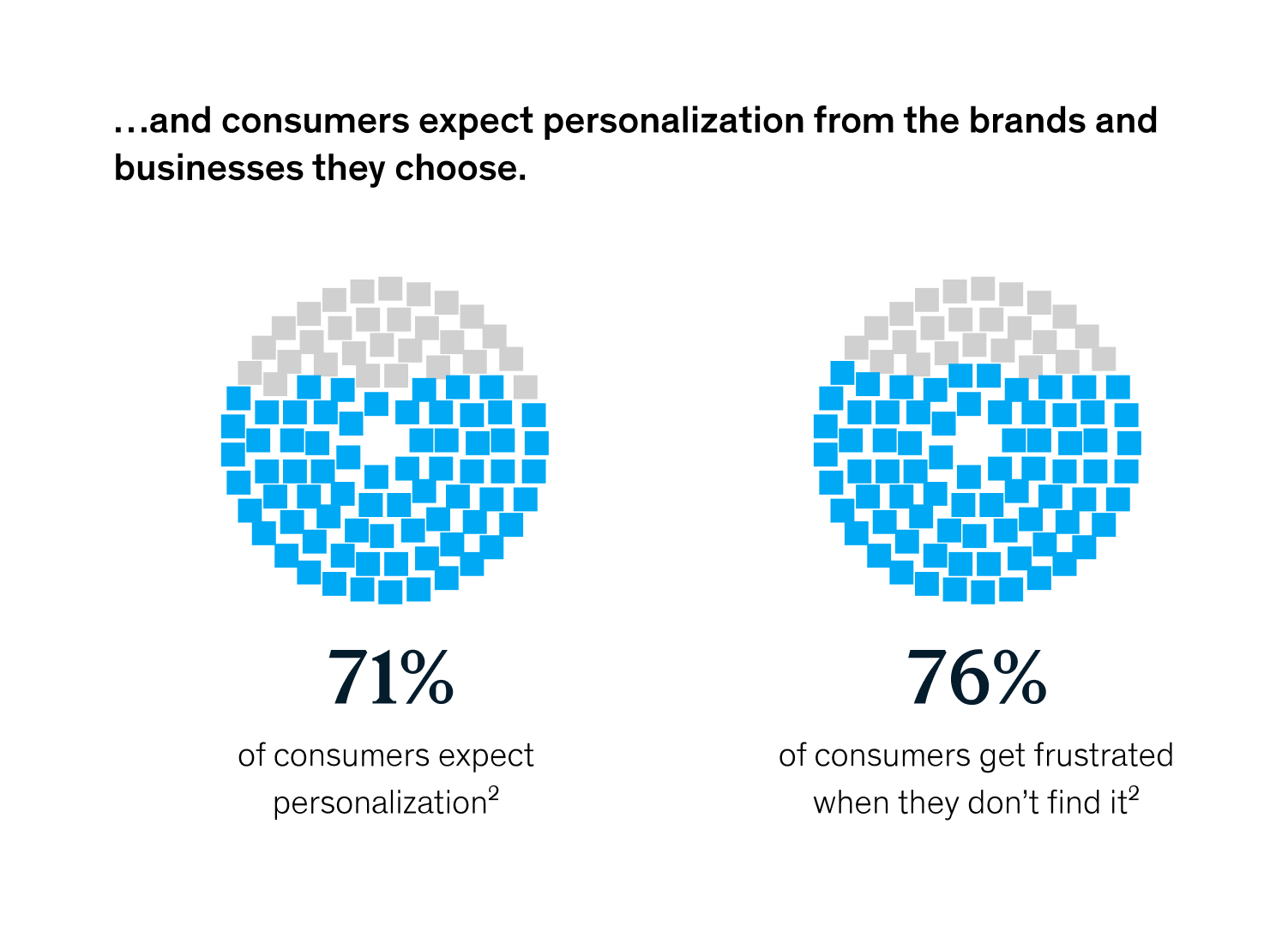
Image Source: Mckinsey
Customer experience personalization is the practice of tailoring interactions, content, and services to meet each customer’s unique needs and preferences.
By leveraging data and insights, businesses can create personalized experiences that resonate with customers on a deeper level, leading to increased satisfaction, loyalty, and engagement.
Use this template to make customers feel valued and special.
1. Customer Overview
Customer Name: [Customer Name]
Key Contacts: [Primary Contact, Secondary Contact]
Customer Preferences: [Brief Overview of Known Preferences and Behavior]
2. Personalization Goals
Objective: [Specify the Desired Outcome for Personalizing the Customer Experience]
Success Metrics: [Define Key Performance Indicators (KPIs) for Measuring Personalization Effectiveness]
3. Customer Data Collection
Data Sources: [Identify Sources of Customer Data, e.g., CRM, Web Analytics, Surveys]
Customer Profiling: [Develop Detailed Customer Profiles Based on Collected Data]
Behavioral Analysis: [Analyze Customer Behavior to Identify Personalization Opportunities]
4. Personalized Engagement
Customized Communication: [Develop Tailored Email Campaigns, Offers, and Content]
Product Recommendations: [Use Data to Provide Personalized Product or Service Recommendations]
Targeted Campaigns: [Design Marketing Campaigns that Align with Customer Interests and Needs]
Personalized Customer Journeys: [Map Out Individual Customer Journeys with Personalized Touchpoints]
5. Feedback & Continuous Improvement
Feedback Collection: [Set Up Mechanisms for Gathering Customer Feedback on Personalized Experiences]
Data-Driven Adjustments: [Use Feedback and Data to Refine and Continuously Improve Personalization Tactics]
A/B Testing: [Conduct A/B Testing to Determine the Most Effective Personalization Approaches]
6. Customer Success Manager (CSM) Involvement
Regular Check-ins with CSM: [Establish Regular Meetings with Assigned CSM to Review and Optimize Personalization Strategies]
Proactive Recommendations: [Provide Actionable Advice from CSM Based on Ongoing Customer Data and Feedback]
7. Continuous Monitoring
Engagement Tracking: [Implement Systems to Monitor Customer Engagement with Personalized Content]
Personalization Impact Analysis: [Utilize Tools to Measure the Impact of Personalization on Customer Satisfaction and Retention]
8. Next Steps
Next Steps for Enhanced Personalization: [Specify Immediate Actions to Further Personalize the Customer Experience]
Long-term Personalization Strategy: [Outline Strategies for Sustaining and Improving Personalization Over Time]
7. Customer Success Plan Template for Upselling
“Here is a simple but powerful rule—always give people more than they expect to get.” – Nelson Boswell.
Upselling is a powerful strategy to drive additional revenue by encouraging customers to upgrade or purchase higher-value products or services.
This customer success template guides you through the key steps of creating an upselling strategy that not only meets your business objectives but also aligns with the customer’s goals, ensuring mutual success.
1. Customer Overview
Customer Name: [Customer Name]
Key Contacts: [Primary Contact, Secondary Contact]
Upsell History: [Brief Overview of Previous Upselling Interactions]
2. Upsell Goals
Objective: [Specify the Desired Upsell Outcome]
Upsell Metrics: [Define Key Performance Indicators (KPIs) for Successful Upselling]
3. Customer Analysis
Identify Expansion Opportunities: [Analyze Customer Usage Patterns and Identify Areas for Expansion]
Customer Feedback: [Gather Feedback on Additional Features or Services Desired]
4. Proactive Outreach
Scheduled Check-ins: [Determine Frequency of Proactive Check-ins for Upselling]
Value Proposition Reinforcement: [Reiterate the Value of Additional Features or Services]
5. Upsell Opportunities Presentation
Customized Upsell Proposals: [Create Tailored Proposals Based on Customer Needs]
Benefits Communication: [Clearly Communicate the Benefits of Upselling]
6. Training and Resources
Upsell Training Sessions: [Organize Training Sessions for New Features or Services]
Documentation Access: [Provide Access to Relevant Documentation and Resources]
7. Exclusive Offers or Incentives
Special Discounts: [Introduce Exclusive Discounts for Upselling]
Incentives for Expanding: [Offer Incentives for Expanding Commitments]
8. Customer Support Enhancements
Dedicated Support for Upsells: [Assign Dedicated Support Contacts for Upselling Customers]
Fast-Track Support: [Implement Faster Response Times for Upselling Customers]
9. Customer Success Manager (CSM) Involvement
Regular Check-ins with CSM: [Establish Regular Meetings with Assigned CSM]
Actionable Advice: [Provide Proactive Recommendations from CSM]
10. Feedback Collection
Feedback Mechanism: [Specify How Customer Feedback on Upselling Will Be Gathered]
Analysis and Response: [Outline Steps for Analyzing Feedback and Implementing Changes]
11. Renewal Incentives
Renewal Offers: [Introduce Special Renewal Offers or Incentives for Expanded Commitments]
Upsell Opportunities During Renewal: [Identify and Communicate Upsell Opportunities During Renewal Period]
12. Continuous Monitoring
Upsell Tracking: [Implement Systems to Monitor Upsell Progress and Metrics]
Churn Prediction Analysis: [Utilize Tools to Predict and Address Potential Churn]
13. Next Steps
Next Steps After Successful Upselling: [Specify Immediate Actions Following Successful Upselling]
8. Customer Success Plan Template for Voice of the Customer (VoC) & Feedback Collection
Around 36% of customers with a product or service complaint will share their concerns on social media, putting your business in a negative light.
So, what can you do to save your brand’s reputation?
Implementing effective feedback collection strategies is crucial for businesses to gain valuable insights into customer satisfaction, identify areas for improvement, and refine products or services. Regular feedback not only enhances customer experience but also builds trust.
Use this template to kickstart your feedback collection process.
1. Customer Overview
Customer Name: [Customer Name]
Key Contacts: [Primary Contact, Secondary Contact]
Previous Feedback History: [Brief Overview of Previous Feedback Interactions]
2. Feedback Collection Goals
Objective: [Specify the Desired Outcome for Feedback Collection]
Feedback Metrics: [Define Key Performance Indicators (KPIs) for Successful Feedback Collection]
3. Customer Analysis
Identify Feedback Touchpoints: [Analyze Customer Journey to Identify Optimal Feedback Touchpoints]
Preferred Feedback Channels: [Determine How Customers Prefer to Provide Feedback]
4. Proactive Outreach for Feedback
Scheduled Check-Ins: [Determine Frequency of Proactive Check-ins for Feedback]
Value of Feedback Reinforcement: [Communicate the Importance of Customer Feedback]
5. Feedback Collection Mechanisms
Surveys and Questionnaires: [Implement Regular Surveys or Questionnaires]
Interviews or Focus Groups: [Organize Periodic Interviews or Focus Groups for In-Depth Feedback]
6. Incentives for Feedback
Recognition and Rewards: [Provide Recognition or Rewards for Valuable Feedback]
Exclusive Offers: [Introduce Exclusive Offers for Customers Providing Feedback]
7. Customer Support Enhancements
Dedicated Support for Feedback: [Assign Dedicated Support Contacts for Handling Feedback]
Fast-Track Support for Feedback Providers: [Implement Faster Response Times for Customers Providing Feedback]
8. Customer Success Manager (CSM) Involvement
Regular Check-ins with CSM: [Establish Regular Meetings with Assigned CSM for Feedback Discussions]
Actionable Advice: [Provide Proactive Recommendations from CSM Based on Feedback]
9. Continuous Monitoring
Feedback Tracking: [Implement Systems to Monitor Feedback Progress]
Feedback Analysis: [Utilize Tools to Analyze and Extract Insights from Feedback]
10. Closed-Loop Feedback System
Communication of Changes: [Outline a Clear System for Communicating Changes Based on Feedback]
Acknowledgment of Feedback: [Ensure Customers Receive Acknowledgment for Their Feedback]
How to Create a Customer Success Plan
Creating a customer success plan involves several key steps to ensure you understand, meet, and exceed customer expectations. Here’s a step-by-step guide:
1. Define Customer Success Objectives
As the first step, it is important to clearly outline what success means for your customers, aligning with their goals.
Identify specific, measurable objectives and key performance indicators (KPIs) that will serve as benchmarks for their journey with your product or service.
2. Segment Your Customers
Group your customer base based on shared characteristics or needs, such as their age, sex, economic status, purchase frequency, location, etc.
3. Identify Key Customer Touchpoints
Map out the entire customer journey, from the initial interaction and onboarding to ongoing engagement and after-sales support.
Identify crucial touchpoints where customers interact with your product or service to anticipate needs and provide timely support throughout their experience.
4. Establish Communication Channels
In the next step, you must define effective communication channels that align with your customers’ preferences.
Well-defined communication channels, whether through email, live chat, in-app messages, or personal meetings, ensure that you can reach and engage with customers in ways that resonate with them.
5. Assign Customer Success Managers (CSMs)
If it is feasible for your business, designate dedicated customer success managers for key accounts.
These individuals act as advocates for customers within your organization, providing personalized support and guidance. CSMs can help nurture relationships, understand customer needs, and curate strategies to ensure their ongoing success.
6. Document the Customer Success Plan
Formalize your customer success plan by creating a comprehensive process document. Include details on customer objectives, success milestones, communication strategies, and feedback mechanisms.
This documented plan serves as a centralized reference for your team, ensuring everyone is aligned with customer success goals and strategies. It also facilitates transparency and accountability within your organization.
7. Regularly Review and Update
Implement a systematic process for routinely reviewing and updating your customer success plan. Regular assessments allow you to stay agile and responsive to shifting customer needs, industry trends, and internal developments.
By regularly revisiting and refining the plan, you ensure its continued relevance and effectiveness in driving customer satisfaction and long-term loyalty.
FREE. All Features. FOREVER!
Try our Forever FREE account with all premium features!
Turn Your Customer Success Plan Into Reality!
You must have heard the old adage, “Failing to plan is simply planning to fail.”
A well-crafted customer success plan will help you cultivate enduring customer relationships and drive organizational triumph.
Feel free to explore and get inspired by the customer success templates shared above. You can use a template as it is or edit certain sections based on your unique needs and objectives.
If you are looking for a tool to track important customer success and service metrics like CSAT, ticket response time, resolution time, etc., ProProfs Help Desk can be a great option. Whether customers reach out to your team via email, live chat, or web forms, you can centralize all communications in one place and personalize every interaction.
Frequently Asked Question
What are the common challenges when creating a customer success plan?
Common challenges include accurately identifying customer needs, setting realistic goals, integrating cross-functional teams, and managing data effectively. Overcoming these requires thorough research, clear communication, and leveraging tools that provide actionable insights.
How does a customer success plan impact customer retention?
A well-executed customer success plan proactively addresses customer needs, leading to higher satisfaction and loyalty. By ensuring customers achieve their desired outcomes, the plan reduces churn and increases the likelihood of renewals and upsells.
What are the key components of a customer success plan template?
Key components of customer success templates include customer goals, success metrics, action plans, timelines, stakeholder responsibilities, and feedback loops. These elements help structure the plan to ensure it effectively supports the customer journey and drives desired outcomes.
 Tips
Tips
We’d love to hear your tips & suggestions on this article!
FREE. All Features. FOREVER!
Try our Forever FREE account with all premium features!


 We'd love your feedback!
We'd love your feedback! Thanks for your feedback!
Thanks for your feedback!


